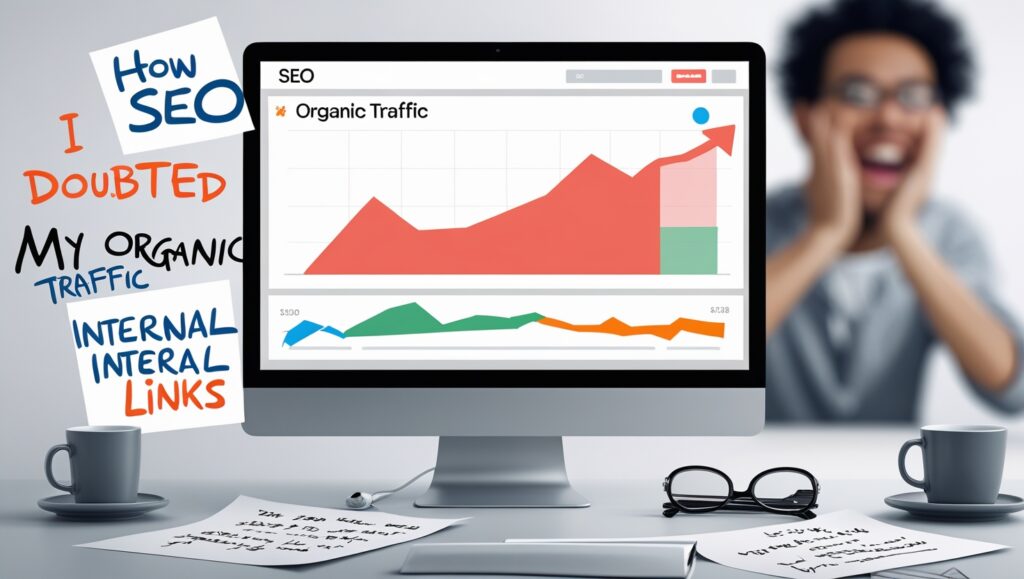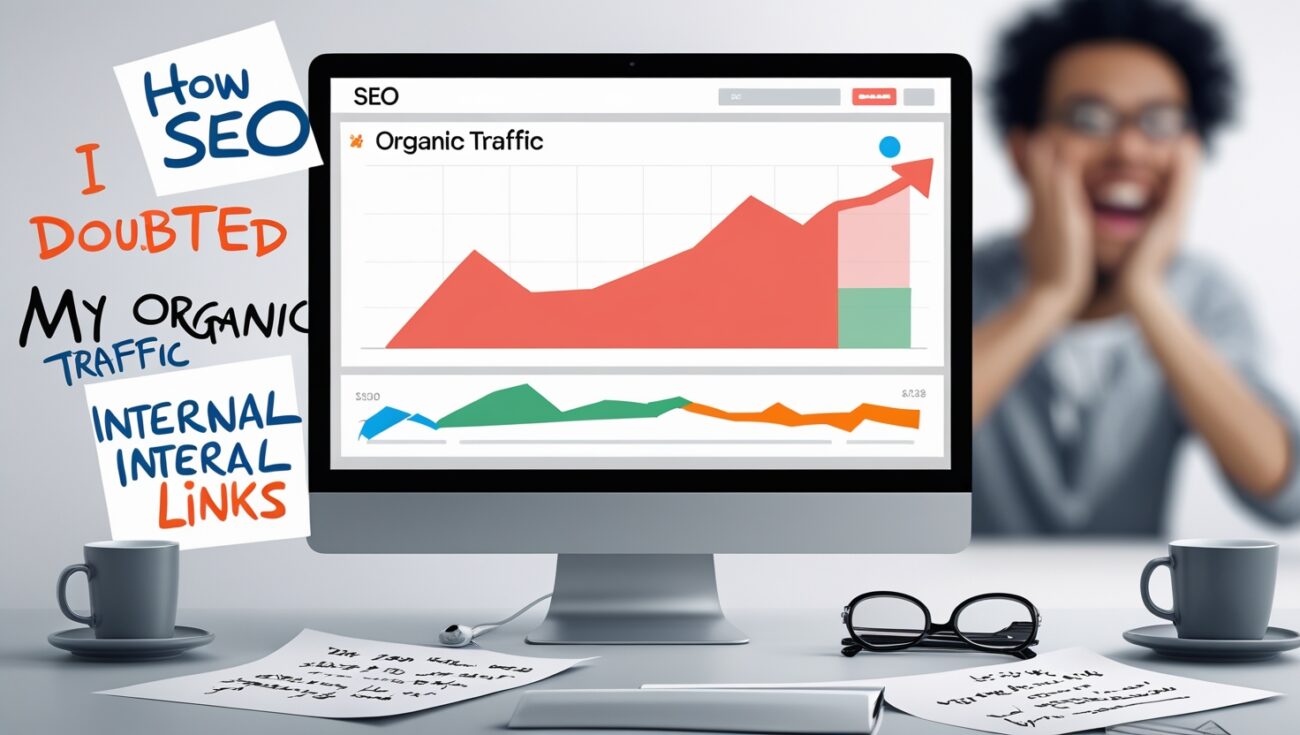How I Doubled My Organic Traffic with Smarter Internal Links
For years, I was stuck in an SEO plateau. I was consistently creating high-quality content, diligently targeting keywords, and even earning a decent number of backlinks. Yet, my organic traffic felt stubbornly stagnant. I knew there was more potential to unlock, but I couldn’t quite put my finger on the missing piece.
Then, I stumbled upon a strategy that, frankly, felt almost too simple to be a game-changer: smarter internal linking. And the results? Well, let’s just say my organic traffic more than doubled within a few short months.

Table of Contents
Living here in the United States, I understand the competitive nature of online business. Every click, every visitor counts. That’s why I’m excited to share my personal experience and the specific tactics I used to harness the foundational power of internal links and achieve significant, measurable growth. This isn’t just theory; this is my story of how I transformed my website’s performance from the inside out.
My “Aha!” Moment: Realizing the Untapped Potential
Like many content creators, I understood the basic concept of internal linking – linking related articles together. But I was doing it haphazardly, almost as an afterthought. It wasn’t until I started treating my internal link profile as a strategic asset that I began to see a real shift. I realized I was sitting on a goldmine of untapped potential within my own website. My existing content held the key to unlocking more traffic and boosting my overall SEO.
The Specific Strategies I Implemented
Here are the key strategies I focused on that led to doubling my organic traffic:
1. The “Hub and Spoke” Overhaul
I identified my core topics and began building comprehensive “hub” or pillar pages. Then, I meticulously linked all my related, more specific “spoke” articles back to these central hubs. This created clear topical clusters and made it incredibly easy for both users and search engine bots to navigate my content and understand the relationships between different topics.
2. Deep Linking to High-Value Pages
Instead of just linking to category pages or my homepage, I focused on deep linking directly to my most important “money” pages – the ones that converted visitors into leads and customers. I strategically placed these links within relevant blog content where users were most likely to be interested in taking the next step.
3. Rescuing Orphaned Content
Using Linkbot (yes, this tool became absolutely essential for me), I discovered dozens of orphaned pages – valuable pieces of content that had no incoming internal links. These were essentially invisible to search engines. By strategically linking to these pages from relevant, high-authority articles, I immediately brought them into my site’s network and saw many of them get indexed and start ranking quickly. Finding and fixing these orphaned pages with Linkbot was one of the most impactful changes I made.
4. Optimizing Anchor Text for Clarity and Relevance
I moved away from generic anchor text like “click here” and started using descriptive, keyword-rich phrases that accurately reflected the content on the linked page. This not only improved the user experience but also provided stronger signals to Google about the topic of the destination page.
5. Regularly Auditing and Refining My Link Profile
Internal linking isn’t a one-time task. I made it a habit to regularly audit my internal link profile, again relying heavily on Linkbot, to identify broken links, new orphaned pages, and opportunities for further optimization. This ongoing maintenance ensured my site structure remained healthy and effective. Linkbot made this process incredibly efficient and allowed me to stay on top of my internal linking strategy.
The Results: Tangible and Significant
Within a few months of consistently implementing these strategies, I started to see a significant upward trend in my organic traffic. It wasn’t a gradual climb; it was a noticeable surge. My key pages started ranking higher for their target keywords, my overall site visibility improved, and, most importantly, my organic traffic more than doubled.
This increase wasn’t just vanity metrics. It translated directly into more leads, more customers, and a healthier bottom line for my business. The power of strategically connecting my existing content was undeniable.
My Recommendation: Take Control of Your Internal Links
If you’re looking for a real, tangible way to boost your organic traffic without relying solely on the unpredictable world of external backlinks, I urge you to take a serious look at your internal linking strategy. It’s a foundational element of SEO that you have complete control over, and the results can be transformative.
Don’t underestimate the power of connecting your own content in a smarter, more strategic way. It was the secret weapon that finally helped me break through my SEO plateau and achieve the organic growth I had been striving for. If you’re ready to unlock the hidden potential of your website and see the kind of results I did, I highly recommend giving Linkbot a try. It was a game-changer for me, and I believe it can be for you too.
My journey wasn’t just about implementing technical fixes; it was a mental shift. I moved away from a keyword-centric mindset and started thinking about my website as a library of interconnected topics. This change allowed me to see opportunities to link articles that shared a common theme, even if they didn’t share the same exact keyword. It was this focus on topical authority that truly unlocked the site’s potential.
I also noticed a significant improvement in my website’s crawl budget. Before my overhaul, Google’s bots were navigating a scattered collection of pages, often hitting dead ends or loops. By creating a clear, logical site architecture with smarter internal links, I made it incredibly efficient for the bots to crawl and index every single page on my site, ensuring none of my valuable content went undiscovered.
Beyond the numbers, a well-linked site just feels better. For me, going back through my own content and creating these connections felt like tidying up a messy room. The site became more organized, and I felt a renewed sense of pride in its structure. That improved sense of quality translated into a more confident marketing approach.
This success story isn’t a one-time fluke. The power of a good internal linking strategy is its compounding effect. Each time I publish a new article and strategically link it into my existing hub, I’m making the entire network stronger. It’s a foundational, evergreen tactic that continues to build momentum over time, ensuring the growth I saw wasn’t just a temporary spike.
The result of my linking strategy was a dramatic increase in traffic from long-tail keywords. My well-linked pages began ranking for a wider variety of specific search queries, bringing in highly qualified, niche traffic that I wouldn’t have captured otherwise. It was a clear sign that Google was now understanding the full scope of my expertise on a given topic.
One of the most valuable benefits I got from using an automated tool was the “to-do” list it provided. Instead of being overwhelmed by the sheer size of my website, the tool gave me a prioritized, actionable list of internal links to create. It transformed a monumental, manual task into a series of manageable steps that I could tackle in just minutes.
The return on investment for this specific SEO strategy was unlike any other tactic I had tried. Unlike expensive ad campaigns or time-consuming guest-posting efforts, my internal linking overhaul required no external resources. The cost was minimal, and the results were permanent, a significant advantage for any business with a limited budget.
I’ll never forget the first time I saw a page that had been buried in my site get a huge ranking boost just from a few well-placed links. It was a piece of content I had worked hard on and then forgotten about. This personal experience proved to me that the work I had already done held incredible, untapped value, just waiting to be unlocked.
My users noticed the change, too. I started receiving comments and emails thanking me for making the site so easy to navigate. This positive feedback from my audience was the ultimate validation that my efforts weren’t just for search engines; they were genuinely improving the user experience, which is what matters most.
This journey taught me that internal linking isn’t just about SEO. It’s about building a better website. A site that is easy to navigate, with a clear flow of information, is a site that users will love and a site that Google will reward. It’s a win-win for everyone involved.
For years, I had outsourced my link building, which felt like I was giving up control of my SEO destiny. But by mastering my internal links, I felt like I was finally in the driver’s seat. I was proactively building my site’s authority from the inside out, on my own terms, which was an empowering and exciting feeling.
Ultimately, my story is proof that the most powerful SEO transformations often come from within. While external validation is important, the true foundation of a successful website is a healthy, well-organized, and strategically linked internal structure. It’s the secret weapon that truly helped me double my organic traffic.

